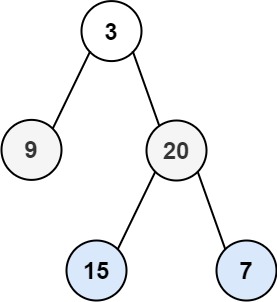102. Binary Tree Level Order Traversal
102. Binary Tree Level Order Traversal
Description
Given the root of a binary tree, return the level order traversal of its nodes’ values. (i.e., from left to right, level by level).
Example 1:

1 | Input: root = [3,9,20,null,null,15,7] |
Example 2:
1 | Input: root = [1] |
Example 3:
1 | Input: root = [] |
Constraints:
- The number of nodes in the tree is in the range
[0, 2000]. -1000 <= Node.val <= 1000
Hints/Notes
- 2024/12/27
- binary tree
- 0x3F’s solution(checked)
Solution
Language: C++
1 | /** |